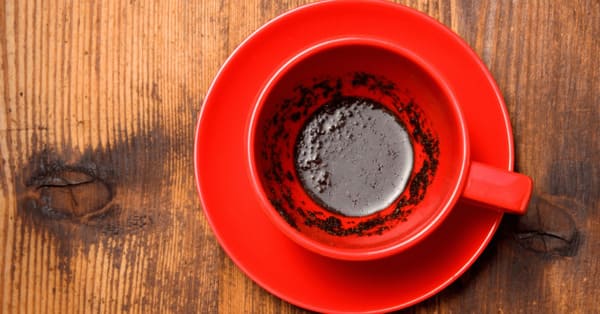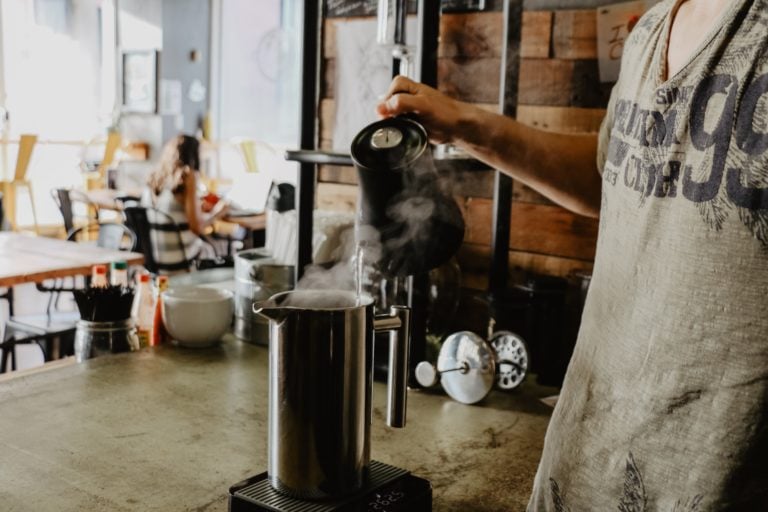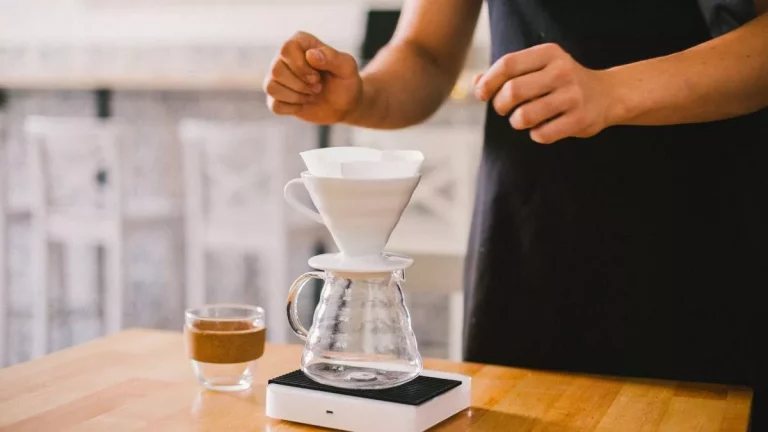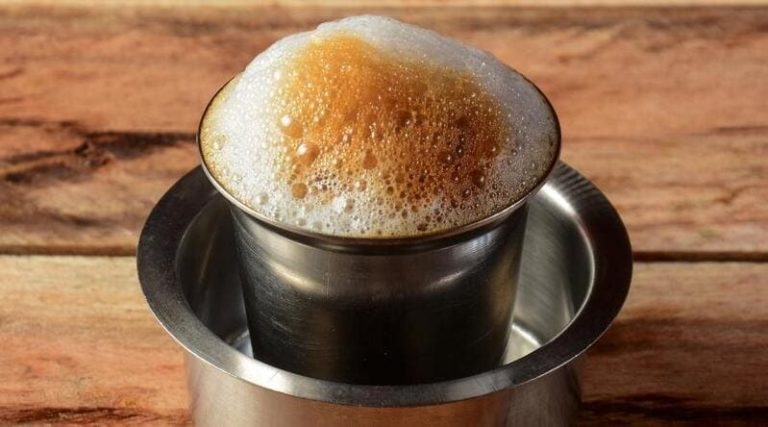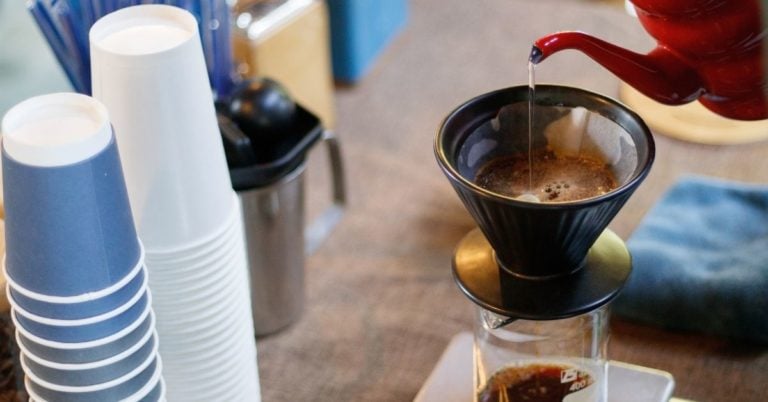If you are like me, just the thought of spending an entire day without coffee is torturous in itself. I discovered this the hard way after a long day of miserably failing to keep up with a tight schedule. My groggy, decaffeinated self simply couldn’t keep up.
So I decided to create a comprehensive coffee maker gurgling noise troubleshooting guide to help my fellow coffee lovers dealing with a faulty coffee machine.
Coffee maker gurgling noise reasons & Fixes?
Read on to learn why your coffee maker is making gurgling noises and possible solutions for this issue.
1. Loose components
Loose components are the most common cause of noise in modern coffee makers. Regular usage of your coffee maker can cause some parts to loosen up and become inefficient.
It takes only one loose part for your machine to start making annoying noises and therefore become gradually ineffective.
Check if all the parts of your coffee maker are properly secured and replace those that are severely damaged.
2. Trapped dirt and debris
If dirt gets caught up in the passages of your coffeemaker, it can cause gurgling noises and ultimately slow down your machine. Apart from the loud noises, you can tell when you have a dirty coffee maker if it:
- Produces bitter coffee
- Gums up the brewing process
- Creates stains
- Has mineral deposit and oily sludge
The invisible germs and bacteria pose an even greater threat. Mold and yeast, for instance, can trigger allergic reactions and have been shown to cause infections.
Cleaning your coffee maker on a regular basis can help to not only prevent annoying sounds, but to also keep you from getting sick.
3. Mineral buildup
Another reason your coffeemaker may be making gurgling noises is mineral buildup in the tubes, especially if your model is made with aluminum tubes.
This problem is especially common when using “hard” water (as opposed to purified water) that is usually packed with minerals such as magnesium and calcium.
These minerals tend to accumulate in your coffee maker over time until they have to be cleared out. In addition to the loud gurgling noises, failure to remove mineral deposits from your coffeemaker could lead to other issues such as:
- The coffee maker not heating the coffee hot enough
- The machine stopping to work if the mineral buildup clogs or blocks water flow
- The coffee maker failing to reach the ideal brewing temperature for extracting flavor from your beans
How To Clean Your Coffee Maker
You’ll need:
- Cleaning cloth
- Coffee filters
- Water
- White distilled vinegar
Step 1: Pour water and vinegar into the coffeemaker
Mix equal parts water and white distilled vinegar into the reservoir. Add some more vinegar if you notice a particularly nasty buildup in your coffee maker. The vinegar will dissolve any accrued mineral deposits and also sanitize your machine.
Step 2: Turn the brewer on
Place a filter in the basket and start brewing. Turn the brewer off when you are about halfway done, and wait for 30 to 60 minutes so that the remaining vinegar solution soaks into the reservoir and carafe.
Step 3: Finish the brewing cycle
Turn the brewer back on and complete the brewing cycle. Next, remove the vinegar solution and flush out the vinegar odor with water.
You can do this by adding fresh water into the reservoir and then repeating the brewing cycle. Perform the brewing cycle once more with clean water. Finally, use a clean piece of cloth to wipe down your coffeemaker.
Cleaning with water helps to remove some of the grime, but that is not enough. To completely eliminate these hard, whitish substances from your machine, you need to use a cleaning process known as descaling.
The general rule of thumb is to descale your coffee maker every 3 to 6 months, even if you clean it on a regular basis.
How To Make A DIY Descaling Solution
You can often find a decent descaling solution in the market for removing limescale buildup in your coffeemaker. These products are usually made of a mixture of various acidic chemicals. You can also create your own solution at home using common household items.
1. Vinegar Descaler
If you have ever had to deal with a stubborn stain on your carpet or furniture, then you are probably aware of vinegar’s efficient cleaning capability.
Vinegar is effective against lime and minerals because it is highly acidic. The best part is that this household product is extremely cheap and readily available.
To create a descaling solution with vinegar, mix 2/3 water, and 1/3 vinegar.
2. Citric Acid Descaler
Citric acid is also great at removing lime and mineral deposits due to its low pH. The bonus is that citric acid leaves a nice smell behind, a stern contrast to the unpleasant chemical odor associated with other descaling solutions.
It is also quite cheap and readily available at your local store.
The downside is that you may have to do more cleaning cycles to achieve the same result as a vinegar solution, as citric acid is less potent in comparison.
To create a descaling solution with citric acid, simply dissolve citric acid pellets (one tablespoon) into a gallon of water.
3. Baking Soda Descaler
Baking soda is commonly used as an everyday cleaning product, and you too can use it to get rid of mineral buildups on your coffee machine.
You have to do several cycles to completely descale your machine with this method as it is relatively weak, but you won’t have to worry about any lingering scent or taste after the cleaning process.
To make a descaling solution with baking soda, simply mix a teaspoon of baking soda into one liter of lukewarm water.
4. Lemon Juice Descaler
If you are looking for a more natural descaling solution, lemon juice is a great option. Not only is it effective due to its high acidic properties, but it will also leave a great smell on your coffee maker.
To create a descaling solution with lemon juice, stir 1/3 part lemon juice into 2/3 part water.
How to Unclog a Cuisinart Coffeemaker
As mentioned earlier, failure to clean your coffee maker regularly and thoroughly can result in debris and mineral deposits accumulating within the machine over time. If this happens, clogging may ensue, leading to annoying noises when you turn on your coffee machine.
If you are dealing with a clogged Cuisinart coffee maker, unclogging it is pretty straightforward. Most models are designed with a self-clean feature that makes it easy to maintain.
Some also come with a descale warning that tells you when to remove the mineral deposits during the cleaning process.
- Start by removing and draining the water reservoir
- Disable the auto time features.
- Prepare your favorite DIY descaling solution and pour it into the water reservoir.
- Press the button for hot water and initiate the brewing cycle, being sure to eliminate any liquid running through the machine. Do this until there is no solution left in the reservoir.
- Set your coffee maker aside for 30 to 60 minutes to allow the acid to dissolve any minerals still remaining.
- Use the hot water feature to rinse out any traces of minerals and solution remaining.
How to Unclog a Ninja Coffeemaker
Unclogging a Ninja coffee bar is slightly more complicated.
- You’ll want to start by assessing the control panel of your model. Check whether any indicators are lit up or if the machine is receiving power from your outlet. Then make sure your machine is set up the correct way.
- Next, run a complete descaling cycle to clear the inner tubes and valves of minerals such as magnesium and calcium. To do this, pour 16 ounces of white vinegar into the empty reservoir and then add water to the maximum line.
- Place your carafe below the brew basket, adjust the brew size for a full carafe, and start cleaning.
- Allow the machine to finish the cleaning cycle (about 1 hour). Once it is done, rinse out the water reservoir, brew basket, and carafe and your Ninja coffee bar should be ready to brew!
How to Unclog a Bunn Coffee Maker
Bunn coffee makers are renowned for their longevity and reliability, but only if you take good care of it. If you notice gurgling noises coming from your Bunn machine, it may be due to clogging issues caused by lack of regular cleaning and maintenance.
For this task, you will need:
- Bunn spray head cleaning tool
- Vinegar
- Distilled water
- Mild detergent
- Soft cloth or rag
Step 1: Cleaning
- Unplug the machine before you start cleaning to avoid the risk of electrocution.
- Prepare a solution of warm water and soap or detergent for cleaning the exterior.
- Wipe down the exterior and then take the spray head out of the machine.
- Remove any coffee residues built up within the spray head openings using your spray head cleaning tool.
- Clean the interior of the spray head housing using the long sidehead your spray head cleaning tool. This area is particularly susceptible to residue and mineral deposits, so you may have lots of buildup to clear out.
- Reconnect the spray head to your coffee maker!
Step 2: Descaling
Descaling is important to successfully eliminate any mineral deposits that may be clogging up your Bunn machine.
- Prepare a mixture of 2 parts distilled water to 1 part vinegar – enough to fill up your coffee maker.
- Pour the solution into the coffee pot and start the brewing process.
- Run a brewing cycle using water only to flush out any remaining solution/mineral deposits. Perform at least 3 to 5 rinses to ensure that your coffee does not have an unpleasant taste from the vinegar.
Final Thoughts:
Learning how to diagnose gurgling noises from your coffee maker may not be as fun as learning how to use the machine, but it is equally significant to ensure its longevity.
Most importantly, be careful not to pour water into the wrong compartment when brewing your coffee. If you happen to accidentally pour water into the bean hopper, you may have to deal with a lot worse than just gurgling noises!
Recently my beloved Cuisinart coffee maker had a nasty meltdown – it just stopped working and began to produce weird gurgling noises when I turned it on, and I was forced to confront a question that I have been turning over in my head for quite some time:
Can I really start my day without coffee?
As it turns out, the answer is yes, of course, but with strong hints of grumpiness and a very good chance of breaking out like Mt. Etna.


